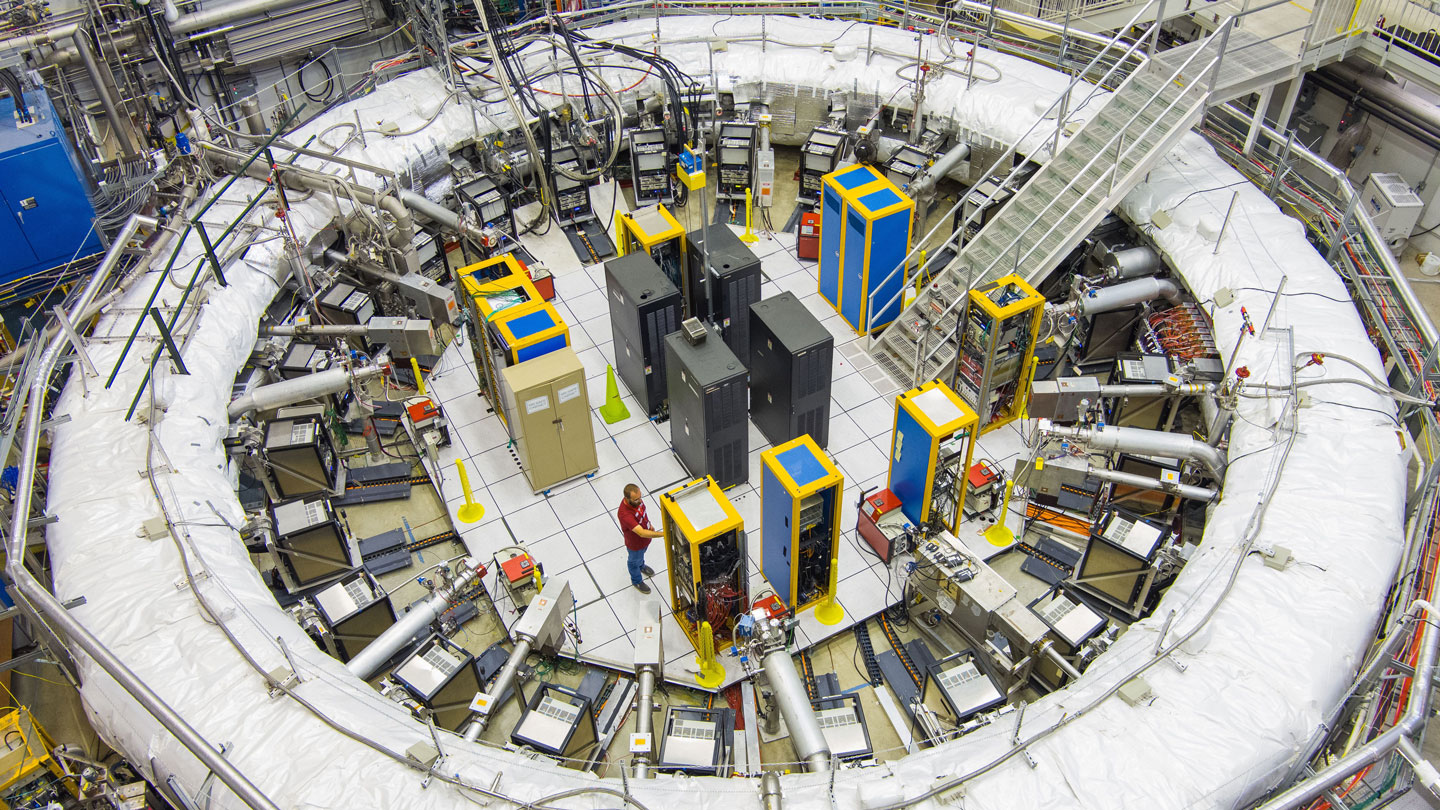Muons might not behave as expected. But scientists can’t agree on what to expect.
By taking stock of how the subatomic particles wobble in a magnetic field, physicists have pinned down a property of the muon’s internal magnet to greater precision than ever before, researchers from the Muon g−2 experiment reported August 10 in a seminar hosted by Fermilab in Batavia, Ill.
Many physicists have hoped that the muon discrepancy might be hinting at a flaw in the stalwart theory that could lead to a better understanding of the universe. But several recent scientific surprises have muddled the theoretical prediction of the strength of the muon’s tiny magnet, making it harder to know if the measurement is pointing to new physics or an unresolved issue with the prediction.
Muons are in the same particle family as electrons but are about 200 times as massive. These short-lived particles behave like miniature magnets, each with their own magnetic field. The strength of that magnet is adjusted by a strange effect of quantum physics. Empty space is filled with a constant flurry of particles that appear temporarily before flitting out of existence. Known as “virtual” particles, they have very real effects. These transient particles alter the strength of the muon’s magnet by an amount that can be calculated according to the standard model.
The precise value of this tweak — known as the anomalous magnetic moment, or “g−2” in physics equations — is what has befuddled physicists.
2023-08-10 10:30:00
Article from www.sciencenews.org




















